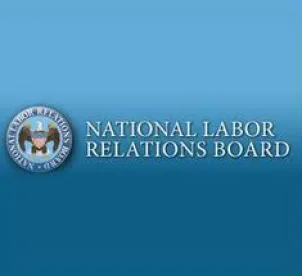- The National Labor Relations Board (NLRB) reinstated its pre-2014 standard for determining whether an individual is an independent contractor or an employee. SuperShuttle DFW, Inc., 367 NLRB No. 75 (Jan. 25, 2019). The NLRB determined that the employer’s shuttle van drivers were not employees, but independent contractors. Thus, they were not covered by the National Labor Relations Act (NLRA), and therefore, they were not eligible to unionize. In making its determination, the Board overruled FedEx Home Delivery, 361 NLRB 610 (2014), and reinstated its prior and long-standing test for determining employee status. The reinstated test places a greater emphasis on an individual’s level of “entrepreneurial opportunity,” whereas the overruled standard limited the significance of entrepreneurial opportunity.
- The NLRB narrowed the circumstances under which it considers an individual employee’s complaint to be concerted activity under the NLRA. Alstate Maintenance, LLC, 367 NLRB No. 68 (Jan. 11, 2019). Reversing precedent that created a presumption that remarks made by an employee in a group setting in the presence of a supervisor were concerted activity, the Board returned to the standard that whether concerted activity has occurred is a factual question based on the totality of the record evidence. The Board set out a five-factor test for determining whether a statement by an employee made in a meeting or a group setting in the presence of a supervisor is concerted. The test focuses on whether the employee was seeking to “initiate, induce, or prepare for group action.” For details, see our article, Labor Board Narrows What May Be Considered Concerted Activity.
- The General Counsel issued an Advice Memorandum finding an employer violated the NLRA when it fired a supervisor who voted in a Board-supervised election. TLC Health Network d/b/a Lake Shore Health, 03-CA-113937 (Mar. 19, 2014, released Jan. 14, 2019). The employer and union disputed whether the employer’s dietary supervisors were “supervisors” under the NLRA. (Supervisors are ineligible to vote in an NLRB election.) The employer terminated a dietary supervisor after she voted in the election despite the employer telling her she was a supervisor and ineligible to vote. The GC decided the termination was unlawful, because the NLRA prohibits employers from penalizing employees (including supervisors) for invoking the Board’s processes to determine, among other things, whether the NLRA applies to them. To find otherwise, the Memorandum stated, would allow employers to “impede access to the Board” and give the employer, rather than the Board, the authority to control access to the Board’s processes. (While the individual eventually was found to be a supervisor under the NLRA, that did not affect the result.)
- The percentage of private sector workers represented by unions fell in 2018, according to the Bureau of Labor Statistics (BLS) of the U.S. Department of Labor. In its “Union Members — 2018” report, the BLS found that the private sector unionization rate fell to 6.4% in 2018, from 6.5% in 2017. Among other findings, the BLS report noted that: (1) men had a higher union representation rate than women (11.1% vs. 9.9%); (2) Black workers were more likely to be union members than White, Asian, or Hispanic workers; (3) older workers were unionized at a higher rate (12.8% of workers ages 45 to 54, compared to 13.3% of those ages 55 to 64); and (4) non-union workers’ median weekly earnings were less than those of unionized employees ($860 per week versus $1,051 per week).
- The GC issued an Advice Memorandum finding an employer did not violate the NLRA when it enforced a non-solicitation provision in contracts with subcontractors without first bargaining with the union representing the employer’s own employees. Duke Energy Indiana, 25-CA-214176 (Dec. 17, 2018, released Jan. 14, 2019). Some of the employer’s linemen — employees constructing and maintaining power lines — worked directly for the employer, while some worked for a subcontractor on the employer’s property (for better wages and benefits). Many of the employer’s linemen ended their relationship with the employer to begin working through the subcontractor. Consequently, the employer notified its own linemen and its subcontractors that it will immediately enforce previously unenforced language in its subcontracts stating that former employees could not work for a subcontractor on its property for six months after leaving its employment. The employer did not notify the union representing the linemen before making the announcement. The GC found that, despite the fact that the employer’s decision to enforce the restriction on the subcontractor’s use of former unit employees affected the employees’ terms and conditions of employment, the employer had not violated the NLRA. The employer’s decision, the GC said, is “the type of managerial decision over which an employer does not have to bargain” and the “selection of independent contractors” and the terms in those subcontracts “fall solely within the employer’s prerogative.”
Top Five Labor Law Developments for January 2019
Thursday, February 14, 2019
Current Public Notices
Published: 28 August, 2025
Published: 25 August, 2025
Published: 25 August, 2025
Published: 25 August, 2025
Published: 25 August, 2025
Published: 22 August, 2025
Published: 20 August, 2025
Published: 20 August, 2025
Published: 18 August, 2025
Published: 18 August, 2025
Published: 15 August, 2025
Published: 14 August, 2025
Published: 12 August, 2025
Published: 11 August, 2025
Published: 8 August, 2025








 />i
/>i
